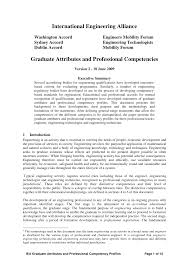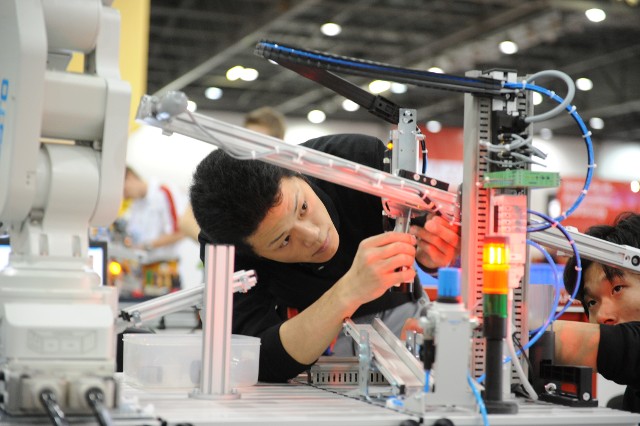
Cold Weather Research Laboratory, (CWR), the Army's cold climate research facility. It houses an electron microscope laboratory, a soils laboratory, a machine workshop, a building for ice drilling, a ballistics facility, wastewater treatment cells and an ice drill test facility. CWR conducts cold temperature research to enhance the Army's capability to deal with extreme temperatures or icy weather conditions. While many aspects of the facility are classified, the core missions are the same - to protect soldiers.
Data center
The next-generation data center for the U.S. Army Corps of Engineers was the first of its kind. The equipment required to be highly redundant, scalable, efficient and energy-efficient. The CRREL campus property was used to build the new facility. The data center is designed to support both internal operations and external operations, ensuring a smooth transition for the mission-critical services. The new facility is designed to comply with strict energy efficiency standards. It has a 96 zone power system which is the lowest power consumption in the world.
The Cold Regions Research and Engineering Laboratory was created in 1971 from three antecedent organizations. This research center provides engineering and scientific support for the U.S. military and government. It also offers technical support to other customers. Cold Regions Research and Engineering Laboratory has more than 20,000,000 files spanning a wide range of subjects. Here, we'll explore the Cold Regions Data Center's mission. Let's get to know more about the Cold Regions Data Center!
Research facility
CRL's Research Center is an important part of University of California, Berkeley. Its mission it to foster research and education in the field of communication and language by bringing together researchers, students, and faculty to study diverse aspects of this process. This includes the study and processing of language by the brain. It also covers the processing of other body fluids. Here, researchers can perform a variety of experiments that are not possible elsewhere.
CRL has two laboratories. One lab is for small artifacts while the other is for large iron artifacts. One of the three labs was just opened. It is called the Archaeological Analytical Laboratory. It not only stores thousands of artifacts; it also offers detailed analysis. While CRL's research facilities are very specialized, the labs can provide valuable assistance to scholars institutions.
Thermal coring drill

The USA CRREL thermal drill is a continuous core drilling machine that uses a heating element with a ring shape. The heating element is heated by a suspended cable. A thermal drill melts the ice annulus, leaving a core 12.2 cm in diameter. Drilling rates can vary from 1.9m h-1 to -28degC, ice to 2.3m h-1 to temperate ice.
Thermoplastic material isn't the only material that can melt when it comes to the construction of thermal drilling drills. Many other types have been independently created. The following bibliography includes papers on thermal drilling drills. A thermal coring drill used in an RC structure can produce a more accurate thermal model. This is why thermal coring drills are frequently used in RC drilling applications.
The 6.7-m tower has three sections, two of which are split to serve as shipping containers for the drill. A single frame supports the drive unit, as well as the cable drum. On the tower is mounted a depth counter. It can drill deep holes thanks to its flexible shaft and mechanically controlled cable drum. The cable drum is suspended in a cable. The tower top has a flexible shaft that connects to the cable.
Safety

CRREL stands for Cold Regions Research and Engineering Laboratory. This facility is used to train oil spillage responders. This facility is located at Prudhoe bay, Alaska. It was originally used by Alaska Clean Seas oil spill cleanup group. CRREL, Geophysical Research Basin provides training for oil spill responders. They are able to practice recovering crude oil spillages in this harsh environment.
The CRREL Facility is a major investment in U.S. Army research in extreme environments. Cold Regions Research and Engineering Laboratory, located in Hanover (New Hampshire), conducts research all across Alaska. This center will also double as a Material Evaluation Facility. It will allow Army field materiel to be validated or improved. This is essential to ensure Soldier readiness. It is also a vital source for critical equipment for Army operations.
FAQ
What are civil engineers doing?
Civil engineering is the creation and construction of structures like roads, bridges or buildings, dams or tunnels, as well as other large-scale projects. It includes all aspects, such as foundations, geotechnics. hydraulics. soils. Environmental impact assessment. Safety analysis. Traffic management. Civil engineers ensure that the project meets its objectives while being cost-effective and environmentally friendly. They must ensure that the structure is safe and durable.
They also help plan and implement public works programs. They could oversee the planning and construction a road, bridge or tunnel.
Are there special qualifications required to study engineering in Canada?
No. All you need is good grades in your GCSEs (or equivalent). However, some universities do require applicants to achieve certain levels of academic achievement before they can enroll. Cambridge University, in particular, requires applicants attain A* to C grades in Maths and English Language.
If you don't meet these criteria, you will need additional courses to prepare for university entrance exams.
You might also need to take additional maths/science subjects and a language course. Talk to your school guidance counselors for more information.
What does an aerospace engineer do?
Aerospace engineer uses their knowledge of aeronautics, propulsion, robotics, and flight dynamics to design aircraft, spacecraft, satellites, rockets, and missiles.
An aerospace engineer might be involved with designing new aircraft types or developing new fuel sources.
Which engineering is the hardest?
It is difficult to design an engineering system that can withstand all failure modes, but is flexible enough to accommodate future changes.
This requires extensive testing and iteration. This requires an understanding of the system's behavior when things go wrong. This is where it becomes important to understand that you are not just solving a single problem.
What does a Chemical Engineer do?
Chemical engineers combine science, math, engineering, technology, business skills, and science to create chemical processes, products and equipment.
Chemical engineers can choose to specialize in areas like petroleum refining or pharmaceuticals, food processing, agricultural, textiles and paper, mining, metalurgisty, and power generation.
They work closely with researchers and scientists to solve complex technical problems.
Engineering What?
Engineering is simply the application of scientific principles in order to create useful things. Engineers apply their knowledge of science and mathematics to design and manufacture machines, vehicles, buildings, bridges, aircraft, spacecraft, robots, tools, structures, materials, electronic circuits, and so on.
Engineers can be involved in research, development, maintenance, testing and quality control. They also have the ability to teach, consult, and make decisions about law, politics and finance.
A variety of responsibilities are available to an engineer, such as designing and building products, processes, and systems; managing projects; performing tests, inspections; analysing data; creating models; writing specifications and standards; supervising employees; and making decisions.
Engineers may specialize in certain areas, including mechanical, electrical and chemical.
Some engineers focus on a specific type of engineering.
What is a Mechanical Engineer?
A mechanical engineer designs machines for people, such as vehicles, tools, products and machinery.
Engineers in mechanical engineering use mathematics, science, and engineering principles for practical solutions to real-world problems.
A mechanical engineer can be involved in product design, production, maintenance quality control, research, testing or sales.
Statistics
- 14% of Industrial engineers design systems that combine workers, machines, and more to create a product or service to eliminate wastefulness in production processes, according to BLS efficiently. (snhu.edu)
- Typically required education: Bachelor's degree in aeronautical engineering Job growth outlook through 2030: 8% Aerospace engineers specialize in designing spacecraft, aircraft, satellites, and missiles. (snhu.edu)
External Links
How To
Which type of engineering should you study?
Technology-related engineers have many exciting career options. There are many types of engineers, each with its own set of skills and responsibilities. Some specialize in mechanical designs, while others concentrate on electrical systems.
Engineers may work directly with clients to design buildings and bridges. Others may spend most of their time working behind the scenes, developing computer programs or analyzing data.
Whatever type of engineer you choose, you'll learn how to apply scientific principles to solve real-world problems.
Aside from learning technical skills students also acquire valuable business and communication abilities. Engineers often work in collaboration with other professionals, such as accountants, managers or lawyers, to create new products and services.
As a student you will be exposed to topics like mathematics, science and chemistry. You will also learn how communicate effectively verbally and in writing.
Engineers have many advancement opportunities, regardless of whether they work for a large firm or a small company. Many graduates are hired right away upon graduation. However, there are many options available to those looking for further education.
You can earn a bachelor's in engineering. This will provide you with a strong foundation for your future career. You could also pursue a master’s degree in engineering to get additional training in specific areas.
A doctorate program allows you to delve deeper into a particular field. A Ph.D. is usually completed after four years of graduate school.